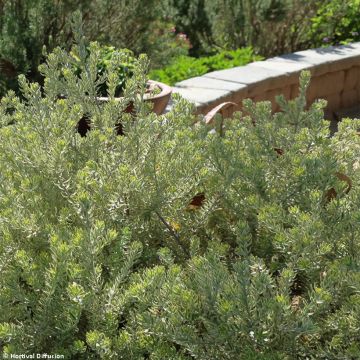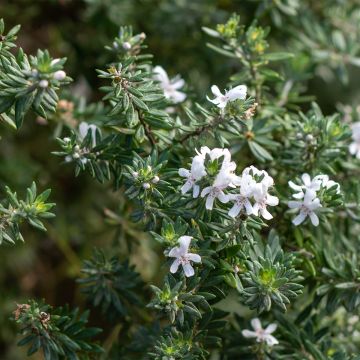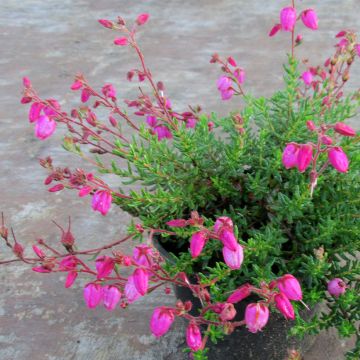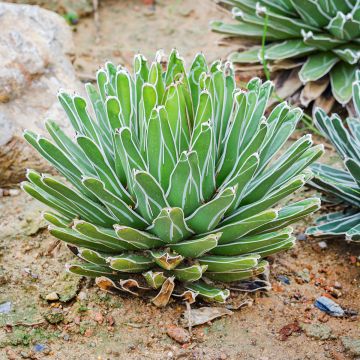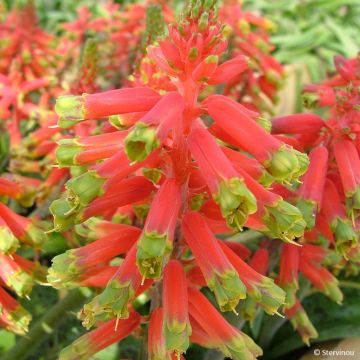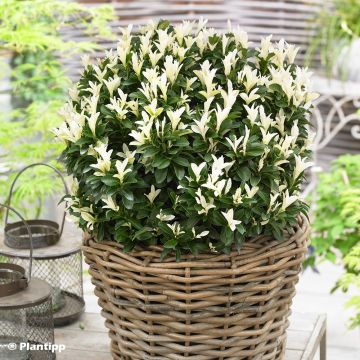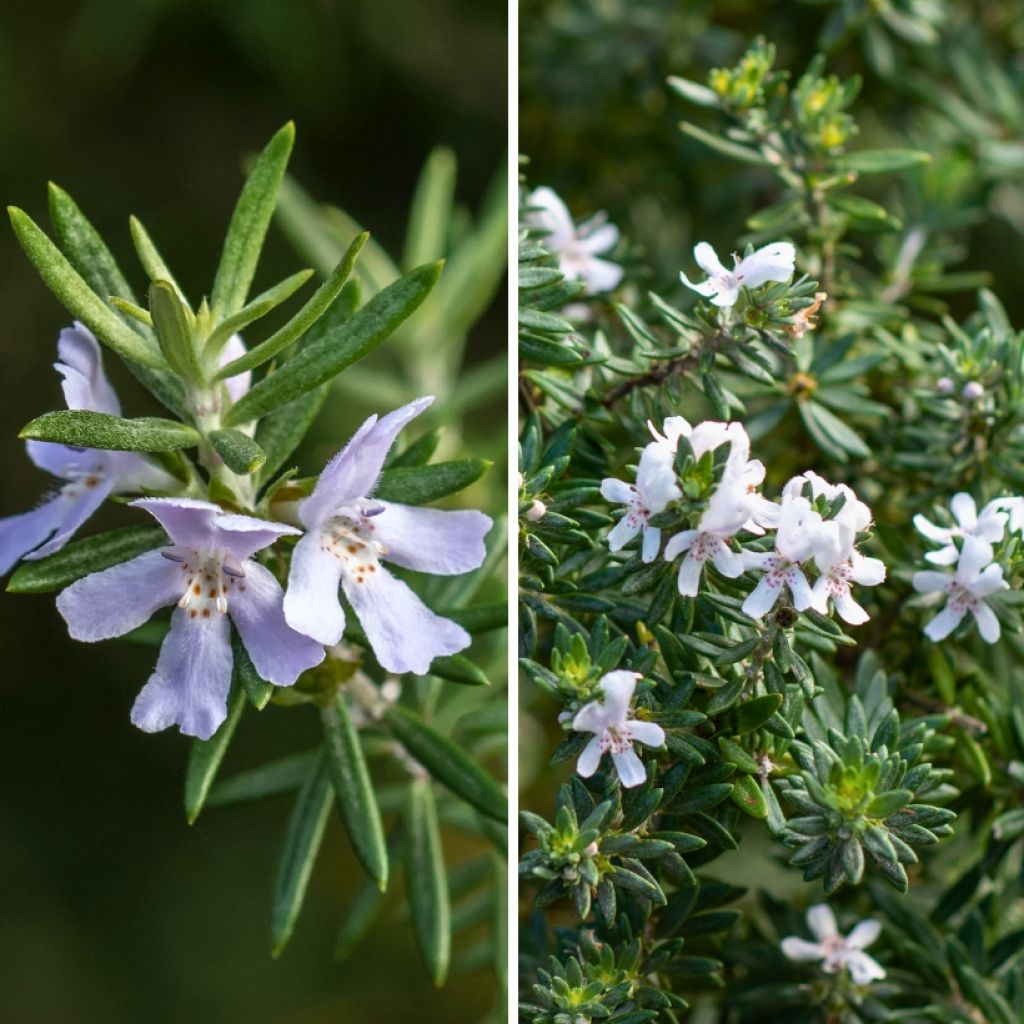

Westringias Duo for Mediterranean Rockeries - Australian Rosemary
Westringias Duo for Mediterranean Rockeries - Australian Rosemary
Westringia fruticosa
Australian Rosemary
This plant carries a 24 months recovery warranty
More information
We guarantee the quality of our plants for a full growing cycle, and will replace at our expense any plant that fails to recover under normal climatic and planting conditions.
From €5.90 for pickup delivery and €6.90 for home delivery
Express home delivery from €8.90.
Does this plant fit my garden?
Set up your Plantfit profile →
Collection items (2 plants)
Description
The Pair of Westringias – Australian Rosemary consists of two different varieties, which will blend their pastel blue and white flowerings. These tender bushes, native to Australia, are valued for their evergreen foliage of silvery-grey leaves and their delicate pastel flowering that extends from spring to autumn. Suitable for Mediterranean climates, they are drought-resistant but perish below -4 °C. Easy to maintain, these Westringias bring a natural and elegant touch to a large rockery, by the seaside. They can also be grown in pots, allowing them to be sheltered in colder regions.
The pair consists of:
1 x Westringia fruticosa: This bush reaches up to 1.5 m in height and spread. Its evergreen foliage is fine and silvery, resembling that of rosemary. Its very pale mauve to white flowering is discreet yet continuous, extending from spring to autumn.
1 x Westringia fruticosa Blanc: A cultivar with a more compact habit, reaching about 1 m in height. It is distinguished by its slightly broader leaves and its white flowering, which is more abundant than that of the classic variety. It also flourishes from spring to autumn.
Plant these Westringias in spring or autumn for better establishment. Position them in full sun within a large rockery or even in pots to enhance the terrace. Place the Westringia fruticosa, the larger of the two, at the back or centre of your arrangement, and the Westringia fruticosa Blanc at the front or on the sides. Maintain a spacing of 60 to 80 cm between each plant to ensure good air circulation and avoid fungal diseases. For a dense coverage, count on 3 plants per m².
To create an original and harmonious Mediterranean rockery, combine the pair of Westringias with Phlomis russeliana featuring their yellow whorled inflorescences against the fuzzy grey-green leaves. Plant three specimens behind the Westringias to add height and a contrast of texture. Add Euphorbia characias 'Emmer Green' with variegated flowers and foliage for structure; two plants alongside the Westringias will suffice for a structured effect. Finally, integrate Teucrium fruticans 'Azureum' (Shrubby Germander) with its silvery foliage and small indigo blue flowers, mixed with the Westringias, for a coherent and diverse ensemble. Place three Germander plants around the Westringias for a soft transition effect between the different heights and textures. These drought-resistant plants, suited to full sun, will compose a unique Mediterranean garden, full of charm and character. They can cover up to 10 m² of rockery.
Report an error about the product description
Plant habit
Flowering
Foliage
Botanical data
Westringia
fruticosa
Lamiaceae
Australian Rosemary
Australia
Other Westringia Rosemary
Planting and care
Australian Rosemary thrives best in conditions that mimic its natural habitat. These Mediterranean plants prefer full sun exposure. They require well-drained soil, ideally non-calcareous, sandy or gravelly, to avoid stagnant moisture, particularly in winter. Once established, Westringias are drought-tolerant and need little watering, especially when planted in the ground; however, a regular supply of water is necessary during the first year after planting to ensure successful establishment. Westringias can withstand sea spray and can tolerate temperatures as low as -4 °C at their peak. A gravel mulch around the base helps retain soil moisture and protects the roots from intense summer heat.
Pot culture: choose a pot with a diameter of at least 40 cm with drainage holes to prevent water accumulation. Use a light, well-draining substrate, composed of potting soil mixed with sand or gravel. Place the pot in full sun or partial shade, and water regularly during the growth period while allowing the substrate to dry slightly between waterings. Apply a balanced liquid fertiliser every two months during the growth season to maintain abundant flowering. Prune lightly after flowering to retain a compact shape and encourage new shoots.
Planting period
Intended location
Care
This item has not been reviewed yet - be the first to leave a review about it.
Evergreen shrubs
Haven't found what you were looking for?
Hardiness is the lowest winter temperature a plant can endure without suffering serious damage or even dying. However, hardiness is affected by location (a sheltered area, such as a patio), protection (winter cover) and soil type (hardiness is improved by well-drained soil).

Photo Sharing Terms & Conditions
In order to encourage gardeners to interact and share their experiences, Promesse de fleurs offers various media enabling content to be uploaded onto its Site - in particular via the ‘Photo sharing’ module.
The User agrees to refrain from:
- Posting any content that is illegal, prejudicial, insulting, racist, inciteful to hatred, revisionist, contrary to public decency, that infringes on privacy or on the privacy rights of third parties, in particular the publicity rights of persons and goods, intellectual property rights, or the right to privacy.
- Submitting content on behalf of a third party;
- Impersonate the identity of a third party and/or publish any personal information about a third party;
In general, the User undertakes to refrain from any unethical behaviour.
All Content (in particular text, comments, files, images, photos, videos, creative works, etc.), which may be subject to property or intellectual property rights, image or other private rights, shall remain the property of the User, subject to the limited rights granted by the terms of the licence granted by Promesse de fleurs as stated below. Users are at liberty to publish or not to publish such Content on the Site, notably via the ‘Photo Sharing’ facility, and accept that this Content shall be made public and freely accessible, notably on the Internet.
Users further acknowledge, undertake to have ,and guarantee that they hold all necessary rights and permissions to publish such material on the Site, in particular with regard to the legislation in force pertaining to any privacy, property, intellectual property, image, or contractual rights, or rights of any other nature. By publishing such Content on the Site, Users acknowledge accepting full liability as publishers of the Content within the meaning of the law, and grant Promesse de fleurs, free of charge, an inclusive, worldwide licence for the said Content for the entire duration of its publication, including all reproduction, representation, up/downloading, displaying, performing, transmission, and storage rights.
Users also grant permission for their name to be linked to the Content and accept that this link may not always be made available.
By engaging in posting material, Users consent to their Content becoming automatically accessible on the Internet, in particular on other sites and/or blogs and/or web pages of the Promesse de fleurs site, including in particular social pages and the Promesse de fleurs catalogue.
Users may secure the removal of entrusted content free of charge by issuing a simple request via our contact form.
The flowering period indicated on our website applies to countries and regions located in USDA zone 8 (France, the United Kingdom, Ireland, the Netherlands, etc.)
It will vary according to where you live:
- In zones 9 to 10 (Italy, Spain, Greece, etc.), flowering will occur about 2 to 4 weeks earlier.
- In zones 6 to 7 (Germany, Poland, Slovenia, and lower mountainous regions), flowering will be delayed by 2 to 3 weeks.
- In zone 5 (Central Europe, Scandinavia), blooming will be delayed by 3 to 5 weeks.
In temperate climates, pruning of spring-flowering shrubs (forsythia, spireas, etc.) should be done just after flowering.
Pruning of summer-flowering shrubs (Indian Lilac, Perovskia, etc.) can be done in winter or spring.
In cold regions as well as with frost-sensitive plants, avoid pruning too early when severe frosts may still occur.
The planting period indicated on our website applies to countries and regions located in USDA zone 8 (France, United Kingdom, Ireland, Netherlands).
It will vary according to where you live:
- In Mediterranean zones (Marseille, Madrid, Milan, etc.), autumn and winter are the best planting periods.
- In continental zones (Strasbourg, Munich, Vienna, etc.), delay planting by 2 to 3 weeks in spring and bring it forward by 2 to 4 weeks in autumn.
- In mountainous regions (the Alps, Pyrenees, Carpathians, etc.), it is best to plant in late spring (May-June) or late summer (August-September).
The harvesting period indicated on our website applies to countries and regions in USDA zone 8 (France, England, Ireland, the Netherlands).
In colder areas (Scandinavia, Poland, Austria...) fruit and vegetable harvests are likely to be delayed by 3-4 weeks.
In warmer areas (Italy, Spain, Greece, etc.), harvesting will probably take place earlier, depending on weather conditions.
The sowing periods indicated on our website apply to countries and regions within USDA Zone 8 (France, UK, Ireland, Netherlands).
In colder areas (Scandinavia, Poland, Austria...), delay any outdoor sowing by 3-4 weeks, or sow under glass.
In warmer climes (Italy, Spain, Greece, etc.), bring outdoor sowing forward by a few weeks.




































